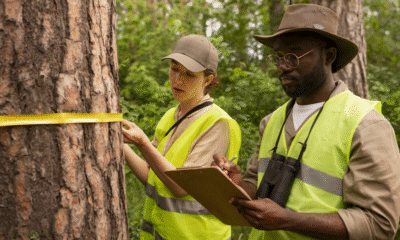TECH
185.63.2253.200: Exploring the Mystery Behind an Invalid IP Address

In the world of networking, every string of numbers tells a story—whether it’s routing a data packet, connecting a device, or logging traffic. Occasionally, we encounter IP addresses that don’t quite make sense—such as 185.63.2253.200. At first glance, it resembles a typical IPv4 address, but any trained eye will quickly notice something is off. Specifically, the third octet, 2253, is well beyond the valid range of 0–255 for IPv4.
So why does 185.63.2253.200 appear in search queries, logs, or even firewall records? Is it a mistake, a symptom of malicious activity, or something more subtle? In this comprehensive guide, we will examine this invalid IP address from technical, cybersecurity, and diagnostic perspectives to understand its presence and implications.
Table of Contents
What Is an IP Address?
IPv4 Format and Rules
Why 185.63.2253.200 Is Not a Valid IP
Common Reasons You Might See 185.63.2253.200
Malicious Uses of Invalid IPs
Parsing and Logging Errors in Systems
IP Spoofing: The Art of Deception
How Firewalls and IDS Interpret Malformed IPs
Investigating the 185.63.x.x Range
How to Handle Malformed IPs in Your Logs
Cybersecurity Implications of Invalid IP Activity
Best Practices for IP Sanitization and Monitoring
Conclusion
1. What Is an IP Address?
The most widely used form is IPv4, consisting of four numbers separated by periods (e.g., 192.168.1.1), where each number (octet) ranges from 0 to 255.
2. IPv4 Format and Rules
A valid IPv4 address must follow this structure:
4 octets (e.g., A.B.C.D)
Each octet ranges from 0 to 255
Example: 8.8.8.8, 192.168.0.1, 185.63.253.200
If even one octet exceeds 255, the address becomes invalid. Hence, 185.63.2253.200 is immediately disqualified because 2253 > 255.
3. Why 185.63.2253.200 Is Not a Valid IP
Breakdown:
First octet: 185 → ✅
Second octet: 63 → ✅
Third octet: 2253 → ❌ (invalid)
Fourth octet: 200 → ✅
The presence of 2253 in the third octet makes this address syntactically and technically invalid in the IPv4 system.
4. Common Reasons You Might See 185.63.2253.200
Even though it’s not a valid IP, 185.63.2253.200 often appears in:
Web traffic logs
Firewall block lists
Proxy server configurations
User search queries
Suspicious file references
Reasons include:
Typographical errors
Corrupted or misformatted log data
Deliberate spoofing by malicious actors
Parser bugs in log collection software
Confused domain resolutions
5. Malicious Uses of Invalid IPs
Cybercriminals often use malformed data to disrupt services or exploit vulnerabilities. Invalid IPs can be used to:
Confuse log parsers to hide real activity
Overload firewalls or WAFs (Web Application Firewalls)
Inject malformed requests in denial-of-service attacks
Bypass basic filtering mechanisms
Example:
If a system isn’t validating IP inputs correctly, a request “from” 185.63.2253.200 could be logged and analyzed improperly, hiding an actual malicious source.
6. Parsing and Logging Errors in Systems
Many systems rely on regular expressions (regex) to extract IPs from network logs. Poorly constructed regex may mistakenly allow strings like 2253 as valid octets.
Real-world scenarios:
Apache logs misinterpreting headers
SIEM tools like Splunk ingesting malformed logs
Log4j-style injection vulnerabilities
The presence of malformed IPs can also cause false positives in threat detection systems, sending analysts on wild goose chases.
7. IP Spoofing: The Art of Deception
IP spoofing is a method used by attackers to disguise their identity. While it usually involves forging a valid IP address, malformed spoofing can also occur.
Why use malformed IPs?
To exploit faulty log sanitizers
To insert rogue payloads into tracking systems
To intentionally poison datasets used by security software
185.63.2253.200 may appear as a spoofed origin in header logs, email trails, or proxy chains.
8. How Firewalls and IDS Interpret Malformed IPs
Firewall systems like pfSense, Cisco ASA, and UFW analyze incoming and outgoing packets based on IP headers. However, they expect valid input.
Malformed input results in:
Dropped packets
Firewall rule violations
Malfunctioning block lists
IDS/IPS triggering false alarms
If your network logs show requests from 185.63.2253.200, your system might be facing spoofed traffic or dealing with parser issues.
9. Investigating the 185.63.x.x Range
The valid IP range 185.63.0.0/16 is owned by data centers in Europe, often tied to:
Proxy/VPN providers
Shared hosting environments
Exit nodes for anonymizing networks
Why this matters:
A user may misreport or misinterpret a valid IP like 185.63.253.200 or 185.63.123.200, and instead enter 185.63.2253.200 into systems or searches, leading to confusion.
10. How to Handle Malformed IPs in Your Logs
Step-by-step remediation:
Implement IP validation filters
Use regex like ^(25[0-5]|2[0-4]\d|1\d{2}|[1-9]?\d)(\.(…)){3}$ to allow only valid IPv4 formats.
Sanitize logs at ingestion
Apply transformation rules in log processors (e.g., Logstash, Fluentd).
Block malformed requests
Use WAFs or custom reverse proxies to drop malformed input before it hits app layers.
Alert on anomalies
Monitor for repeated malformed IPs as potential indicators of probing or spoofing.
11. Cybersecurity Implications of Invalid IP Activity
Malformed IPs like 185.63.2253.200 can indicate:
Reconnaissance: Scanning tools testing your system’s validation rules.
Log poisoning: Attempts to confuse SIEM data.
Exfiltration: Covert data exfil via malformed headers.
Brute-force evasion: Bots hiding behind fake origins.
12. Best Practices for IP Sanitization and Monitoring
To maintain network hygiene:
✅ Validate inputs across APIs and interfaces
✅ Use up-to-date IDS/IPS rules
✅ Deploy rate-limiting for malformed traffic patterns
✅ Leverage threat intelligence to enrich real IP data
✅ Audit firewall rule sets regularly
✅ Document anomalies like 185.63.2253.200 for internal case studies
13. Conclusion
The mystery of 185.63.2253.200 serves as a valuable lesson in cybersecurity, data validation, and logging hygiene. While the address itself is technically invalid, its recurring presence in logs, search queries, and proxy reports is not random—it’s a signal. Whether it’s caused by human error, malicious injection, or system bugs, understanding these anomalies helps fortify networks against threats and improves data integrity.
In today’s digital landscape, even invalid data matters. By investigating malformed entries like 185.63.2253.200, organizations can uncover hidden threats, enhance system resilience, and stay a step ahead of attackers who rely on confusion to slip through the cracks.
TECH
Tex9.net Green IT: Revolutionizing Sustainable Technology in 2025

In an era increasingly dominated by climate change, carbon emissions, and the urgent need for sustainable solutions, Green IT (Green Information Technology) has emerged as a critical area of innovation. Among the trailblazers in this domain is Tex9.net, a digital platform that has seamlessly integrated environmentally friendly practices into the tech landscape. Whether you’re an IT professional, a green tech enthusiast, or an organization looking to align with sustainable practices, Tex9.net Green IT provides a forward-thinking ecosystem worth exploring.
This comprehensive guide delves into everything you need to know about Tex9.net Green IT—from its origins and core initiatives to its technologies, strategies, and global impact.
Introduction to Green IT
In today’s digital age, where technology powers nearly every aspect of modern life, the environmental impact of information technology (IT) is gaining increasing attention.
This includes the design, manufacture, use, and disposal of computers, servers, and associated systems in ways that reduce energy consumption, minimize carbon footprints, and promote ecological balance.
What is Tex9.net?
Tex9.net is a web-based platform that has gained attention for offering various digital tools, services, or content—though its exact purpose can vary depending on how it is used or promoted at a given time. Some users report it being linked to technology-related utilities, while others associate it with online entertainment or content sharing. Because Tex9.net has appeared in different contexts, it’s important to approach it with caution, especially if encountered unexpectedly through advertisements or unsolicited links. As with any lesser-known website, users are advised to verify its legitimacy before sharing personal information or downloading anything from it
The Origin of Tex9.net Green IT
Founded by a group of sustainability-focused engineers and developers, Tex9.net was built on the idea that technology can be both innovative and eco-friendly. The Green IT initiative under Tex9.net officially launched in 2021, with a strong emphasis on:
Reducing carbon emissions in server infrastructure
Using renewable energy sources
Educating the tech community on sustainable practices
Since then, Tex9.net Green IT has become a benchmark in the tech industry.
Core Values and Vision
The platform’s mission is clear: to make Green IT the norm rather than the exception. Tex9.net’s values include:
Sustainability: Making eco-conscious decisions in all facets of operation
Transparency: Publicly sharing environmental metrics
Innovation: Driving new technology for cleaner computing
Accessibility: Offering tools and knowledge to users of all levels
Tex9.net’s Green IT Ecosystem
Tex9.net Green IT is not a single product or service—it’s an entire ecosystem of tools, services, and practices. Key components include:
Green Hosting
Carbon-Neutral Cloud Computing
E-Waste Management Programs
Energy-Efficient Algorithms
Smart Grid Integrations
These elements are interconnected, forming a holistic approach to sustainability.
Technologies Powering Tex9.net Green IT
Tex9.net leverages cutting-edge technologies to ensure environmental efficiency:
a. Virtualization and Containerization
Using platforms like Docker and Kubernetes, Tex9.net maximizes hardware usage, significantly reducing energy demands.
b. Renewable-Powered Servers
All Tex9.net servers are powered by renewable sources like solar, wind, and hydro, eliminating reliance on fossil fuels.
c. Blockchain for Traceability
Tex9.net uses blockchain tech to track energy usage and carbon offset transactions, promoting transparency and accountability.
7. Sustainable Data Centers
Traditional data centers are energy hogs. Tex9.net has reengineered its data centers with:
Liquid Cooling Systems: 40% more efficient than traditional cooling
Server Consolidation: Reduces the physical footprint of hardware
These changes have reduced power usage effectiveness (PUE) to a record 1.1.
Cloud Computing and Energy Optimization
Cloud computing is the backbone of Tex9.net’s offerings. Unlike conventional cloud services, Tex9.net’s platform includes:
Smart Load Balancing to optimize resource allocation
Green Storage Solutions with SSDs and cold storage options
Serverless Architectures that consume resources only when needed
The result? Up to 60% lower carbon emissions per user compared to legacy systems.
AI-Powered Efficiency Systems
Tex9.net integrates Artificial Intelligence into its ecosystem for:
Predictive maintenance of hardware
Dynamic power allocation
Real-time carbon footprint monitoring
These systems not only reduce energy usage but also improve performance.
Tex9.net’s Contribution to the Circular Economy
Tex9.net is a firm advocate of the Circular Economy, minimizing waste and maximizing product lifecycle. Their strategies include:
Hardware Recycling Programs
Upcycling Old Components into educational kits
Partnerships with Electronics Manufacturers to reuse rare materials
This reduces landfill waste and supports sustainable sourcing.
Tex9.net for Enterprises
Businesses looking to adopt sustainable practices find Tex9.net a valuable partner. The platform offers:
Custom Cloud Deployment: Sustainable infrastructure tailored to business needs
Certifications: Helping businesses earn green credentials like LEED and ISO 14001
By 2025, over 3,000 companies globally have partnered with Tex9.net to achieve greener operations.
Education and Community Outreach
Tex9.net doesn’t stop at enterprise solutions—it invests in people. Key initiatives include:
Green IT Certification Programs
Open Source Sustainability Toolkits
Community Hackathons focused on environmental innovation
Educational Webinars and live workshops
Their goal is to create an informed generation of Green IT professionals.
Environmental Impact Metrics
Tex9.net regularly publishes an Environmental Impact Report. As of 2025:
1.2 million kWh of electricity saved annually
5,000 tons of CO₂ emissions avoided
90% of their e-waste responsibly recycled or reused
65% reduction in energy costs for client businesses using their cloud platform
These numbers highlight Tex9.net’s measurable impact on the environment.
Green IT and Compliance with Global Standards
Tex9.net Green IT initiatives align with:
United Nations Sustainable Development Goals (SDGs)
Paris Climate Agreement objectives
EU Green Deal
Green Electronics Council Standards
Their compliance ensures trust and global relevance.
Future Roadmap of Tex9.net Green IT
Looking forward, Tex9.net plans to:
Launch a Decentralized Green Cloud powered by user-shared renewable nodes
Expand to developing countries with solar-powered mini data hubs
Integrate quantum computing for energy-efficient computation
Develop carbon credit marketplaces tied to IT usage
These innovations signal Tex9.net’s long-term commitment to sustainability.
Final Thoughts
Tex9.net Green IT is more than just a buzzword—it’s a full-fledged movement redefining how we view technology’s role in the environment. By merging cutting-edge tech with sustainable strategies, Tex9.net offers a blueprint for a greener digital future.
Whether you’re a business leader, developer, or eco-conscious consumer, engaging with Tex9.net Green IT means contributing to a world where innovation and responsibility go hand in hand. In a digital era driven by speed and scale, Tex9.net reminds us that true progress is green.
FAQs About Tex9.net Green IT
Q1: Is Tex9.net Green IT suitable for small businesses?
Yes. Tex9.net offers scalable green cloud solutions for startups and SMEs at competitive prices.
Q2: How do I measure the carbon footprint of my IT infrastructure using Tex9.net?
Their platform provides real-time monitoring and monthly impact reports.
Q3: Can individuals contribute to Tex9.net’s Green IT mission?
Absolutely! Developers can contribute to open-source green tools, join community events, or use the platform’s green hosting services.
Q4: Is Tex9.net certified as a green company?
Yes. It is certified under ISO 14001, Energy Star, and Green-e Energy programs.
Q5: What makes Tex9.net different from other green tech companies?
Tex9.net uniquely combines cloud infrastructure, blockchain, education, and hardware innovation—all under one sustainable vision.
TECH
The Fascinating World of 7×6: Exploring Its Meaning, Applications, and Significance

At first glance, 7×6 appears to be a simple multiplication problem with a straightforward answer: 42. However, this seemingly basic equation holds deeper significance across mathematics, science, culture, and even philosophy. In this comprehensive exploration, we will delve into the various dimensions of 7×6, uncovering its relevance in different fields, its historical context, and why it continues to be a point of interest for many.
1. The Mathematical Perspective: Breaking Down 7×6
1.1 Basic Arithmetic
This calculation is part of the 7 times table, which is essential for building a strong foundation in arithmetic.
7 × 1 = 7
7 × 2 = 14
7 × 3 = 21
7 × 4 = 28
7 × 5 = 35
7 × 6 = 42
… and so on.
Memorizing these tables helps in quick mental calculations, which are crucial in everyday life, from budgeting to problem-solving.
1.2 Prime Factorization and Number Theory
Prime Factorization: 2 × 3 × 7
A Harshad Number: 42 is divisible by the sum of its digits (4 + 2 = 6, and 42 ÷ 6 = 7).
These properties make 42 a subject of study in advanced mathematics, particularly in algebra and combinatorics.
2. 7×6 in Science and Technology
2.1 Computing and Binary Representations
In computing, numbers like 42 (from 7×6) have unique representations:
Binary: 101010
Hexadecimal: 2A
ASCII Code: 42 represents the asterisk symbol (*).
The binary pattern 101010 is aesthetically pleasing and often used in programming examples.
2.1The Answer to Life, the Universe, and Everything
This has led to 42 becoming a pop culture phenomenon.
Mathematicians and philosophers have debated whether there’s a hidden meaning behind Adams’ choice.
Some speculate that 7×6 = 42 was chosen because of its simplicity yet intriguing properties.
3. 7×6 in Real-World Applications
3.1 Timekeeping and Calendars
A week has 7 days, and if we consider 6 weeks, we get 42 days.
Some work schedules or fitness challenges are structured around 6-week (42-day) cycles.
3.2 Sports and Games
In dominoes, a standard double-six set has 28 tiles, but variations exist.
3.3 Engineering and Design
Grid layouts (like 7 rows × 6 columns) are used in UI/UX design, architecture, and puzzles.
The game Connect 4 uses a 6×7 grid, making 7×6 a critical dimension in game strategy.
4. Cultural and Historical Significance of 7×6
4.1 Ancient Numerology
The number 7 is considered lucky in many cultures (e.g., 7 wonders of the world, 7 colors in a rainbow).
6 is often associated with balance (e.g., 6 sides of a cube, 6 directions in space).
Combining them (7×6 = 42) appears in religious texts, such as the 42 assessors of Ma’at in Egyptian mythology.
4.2 Literature and Media
As mentioned earlier, 42 is iconic in sci-fi.
The number 42 appears in movies, books, and TV shows as an Easter egg.
5. Why Does 7×6 Fascinate People?
5.1 Mathematical Curiosity
It’s simple yet leads to a number (42) with multiple interesting properties.
It’s part of foundational math, making it universally recognized.
5.2 Philosophical Interpretations
Some argue that 7×6 = 42 represents the intersection of order (6) and mystery (7).
It sparks debates on whether math is discovered or invented.
5.3 Internet and Meme Culture
The “42” meme is widely recognized online.
Programmers and mathematicians joke about it in code comments and forums.
Conclusion:
While 7×6 = 42 seems like a basic arithmetic fact, its influence spans mathematics, science, culture, and philosophy. From being a key part of early education to symbolizing the mysteries of existence in pop culture, 7×6 is more than just numbers—it’s a gateway to deeper thinking.
Whether you’re a student, a scientist, or just a curious mind, the next time you see 7×6, remember: there’s always more beneath the surface.
TECH
Exploring the Chemical Compound “HCOOCH CH2 H2O”: Structure, Properties, and Applications

The notation HCOOCH CH2 H2O appears to represent a chemical formula or fragment, possibly relating to an ester or carboxylate compound with some attached functional groups and water. While the exact formula as written is ambiguous and unconventional in standard chemical notation, it likely refers to a compound involving:
A formate group (HCOO–),
A methane or methylene group (CH or CH2),
And possibly water (H2O).
To understand the chemistry implied by this formula, we need to analyze each component and explore related compounds with similar substructures. This will provide insight into their chemical behavior, industrial relevance, and biological importance.
1. Breaking Down the Formula: Interpreting “HCOOCH CH2 H2O”
Let’s dissect the notation piece-by-piece:
HCOO–: This group is the formate ion, the conjugate base of formic acid (HCOOH). Formate is a simple carboxylate anion with one carbon atom bonded to two oxygens (one double bonded, one single bonded and carrying a negative charge).
CH or CH2: These fragments represent carbon atoms bonded to hydrogen atoms. CH indicates a methine group (carbon bonded to one hydrogen and three other groups), while CH2 represents a methylene group (carbon bonded to two hydrogens and two other groups).
H2O: Water, either as a solvent or as a molecule potentially involved in hydration or solvation.
Given the fragments, one possible interpretation is that the formula represents methyl formate hydrate or a related ester molecule with water. Methyl formate has the formula HCOOCH3, which is a formate ester.
Alternatively, it could be describing a hydrated intermediate or compound related to formaldehyde (CH2O) and formic acid/formate.
2. Methyl Formate: The Likely Core Compound
Chemical Structure and Formula
Methyl formate (HCOOCH3) is an ester formed by the reaction of formic acid and methanol. Its molecular formula is C2H4O2, often written as HCOOCH3, emphasizing the formate and methyl groups.
The formate part (HCOO–) is the acyl portion derived from formic acid.
The methyl group (CH3) is attached via an oxygen atom forming the ester linkage.
Physical and Chemical Properties
Appearance: Colorless liquid with a fruity odor.
Boiling Point: About 31–32°C, making it quite volatile.
Solubility: Miscible with many organic solvents and moderately soluble in water.
Reactivity: Methyl formate can hydrolyze in the presence of water and acid/base catalysts to give formic acid and methanol.
Uses and Applications
Solvent: Used in paints, coatings, and adhesives due to its good solvency.
Chemical intermediate: Precursor in the manufacture of formamide and other chemicals.
Fuel additive: Sometimes used as a biofuel component or fuel additive.
Hydration and Water Interaction
While methyl formate itself is an ester and does not typically exist as a hydrate, in aqueous environments it can participate in hydrolysis:
HCOOCH3+H2O→HCOOH+CH3OH\mathrm{HCOOCH_3} + \mathrm{H_2O} \rightarrow \mathrm{HCOOH} + \mathrm{CH_3OH}
Water (H2O) thus plays a key role in breaking the ester bond to regenerate formic acid and methanol.
3. Formaldehyde (CH2O) and Its Relation to the Formula
The fragment CH2O corresponds to formaldehyde, a simple aldehyde with significant industrial and biological importance. Given the proximity in the formula “HCOOCH CH2 H2O,” it’s possible this notation attempts to relate formate or methyl formate with formaldehyde and water.
Formaldehyde Properties and Uses
Structure: Simplest aldehyde with formula CH2O.
Physical State: Colorless gas or aqueous solution called formalin.
Reactivity: Highly reactive, used in polymer synthesis and as a disinfectant.
Hydration: In water, formaldehyde exists partly as methanediol (CH2(OH)2), a hydrate form.
Chemical Relevance to Formate Esters
Formaldehyde can participate in various reactions involving formic acid or formate esters, such as:
Cannizzaro reaction: Disproportionation of formaldehyde in basic medium to methanol and formate ion.
Formose reaction: Polymerization of formaldehyde under basic conditions to form sugars.
This chemistry highlights interactions between formaldehyde (CH2O), formate species, and water.
4. Hydrates and Hydration in Organic Chemistry
The “H2O” in the formula might also suggest hydration — the addition of water molecules to a compound.
Hydrates in Esters and Aldehydes
Esters: Generally do not form stable hydrates but can hydrolyze with water.
Aldehydes: Can form geminal diols (hydrates) upon reaction with water, as with formaldehyde.
This hydration changes chemical properties such as reactivity and solubility, which is critical in biological and industrial contexts.
5. Biological and Industrial Significance of Formate and Related Compounds
Formate in Biological Systems
Formate (HCOO–) is involved in many metabolic pathways:
One-carbon metabolism: Donates formyl groups for biosynthesis of nucleotides and amino acids.
Microbial respiration: Some bacteria use formate as an energy source.
Formaldehyde and Derivatives in Industry
Formaldehyde and its hydrated forms are key intermediates in:
Resin production: Urea-formaldehyde and phenol-formaldehyde resins.
Disinfection and preservation: Due to antimicrobial properties.
6. Summary: Connecting the Pieces of “HCOOCH CH2 H2O”
Although the exact notation HCOOCH CH2 H2O is not a standard chemical formula, it appears to reference chemical fragments or species related to:
Formate esters (like methyl formate) — HCOOCH3,
Formaldehyde (CH2O) and its hydration,
And water (H2O) playing roles in hydrolysis or hydration.
Understanding the chemistry behind each fragment provides insights into important reactions involving esters, aldehydes, and aqueous environments, which are relevant across organic synthesis, industrial chemistry, and biochemistry.
Additional Notes
If you encounter this formula in a specific context (e.g., a reaction scheme or material safety data sheet), it might be a shorthand or partial formula requiring contextual clues for full interpretation.
Conclusion
The informational keyword “HCOOCH CH2 H2O” touches on fundamental chemical building blocks—formate esters, formaldehyde, and water—that are central to organic chemistry and many industrial applications. By breaking down the components and exploring related compounds, we gain a clearer understanding of their properties, reactions, and uses.
From methyl formate’s role as a solvent and intermediate to formaldehyde’s pivotal place in polymer production and disinfection, these molecules underscore the intricate interplay of structure and function in chemistry. Water, as a ubiquitous solvent and reactant, completes the picture by influencing hydrolysis, hydration, and biochemical processes.
-

 HEALTH4 months ago
HEALTH4 months agoMega-Personal.net Health Archives: The Ultimate Guide to Health Information and Resources
-

 FASHION4 months ago
FASHION4 months agoWhy Fashion Is Important to People: A Deep Dive Into Its Cultural, Psychological, and Social Impact
-

 NEWS1 month ago
NEWS1 month agoForestry Development Authority: Guardians of Our Forests
-

 BLOG4 months ago
BLOG4 months agoExploring the Revolutionary Potential of New Software 418DSG7
-

 CRYPTO1 month ago
CRYPTO1 month agoCrypto30x.com: A Comprehensive Investigation Into the 30X Returns Crypto Platform
-

 CRYPTO4 months ago
CRYPTO4 months agoLessInvest.com Crypto: A Comprehensive Guide to Smart Cryptocurrency Investing
-

 CRYPTO4 months ago
CRYPTO4 months agoWhich Crypto Has 1000x Potential? A 2025 Investor’s Deep Dive into the Next Crypto Explosion
-

 NEWS1 month ago
NEWS1 month agoTecnoregio News: Your Ultimate Guide to Innovation, Industry Updates, and Regional Technology Insights
